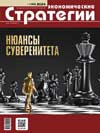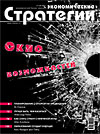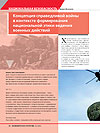Activities of the State Defence Council to Strengthen the Defence Capability of the Russian Empire at the Beginning of the XXth Century
DOI: 10.33917/es-1.193.2024.126-131
The author examines the main activities of the State Defenсe Council (SDC) of the Russian Empire to ensure the defenсe potential at the beginning of the XXth century, in particular elaboration of a general plan for the state defence in accordance with requirements of that time and development of the provisions of the state military doctrine, which was accompanied by a major scientific discussion. Based on a large number of archival documents and materials, the stages of decision-making by the SDC and implementation of major measures to strengthen the defence capability of the empire are revealed. The author traces the ways of solving a very difficult task – strengthening military potential of the state in difficult conditions on the eve of the First World War.
References:
1. Stoletie Voennogo ministerstva [Centenary of the War Ministry]. Saint Petersburg, 1911, vol. 3, otd. 6, pp. 300, 301.
2. Rossiyskiy gosudarstvennyy voenno-istoricheskiy arkhiv (RGVIA) [The Russian State Military Historical Archive (hereinafter RGVIA)]. F. 830, Op. 1, D. 11.
3. Kuzin V.V. Sovet Gosudarstvennoy Oborony v Rossii (1905–1909 gg.): Diss. … kand. ist. nauk [Council of State Defense in Russia (1905–1909): Diss. Candidate of… ist. sciences]. Moscow, 1950.
4. Russkaya voennaya mysl’: konets XIX — nachalo XX v. [Russian Military Thought: End of XIX — beginning XX century]. Moscow, Nauka, 1982.
5. Russkaya voenno-teoreticheskaya mysl’ XIX — nachala XX v. [Russian Military Theoretical Thought of the 19th century — beginning XX century]. Moscow, Voenizdat, 1960.
6. Strokov A.A. Vooruzhennye sily i voennoe iskusstvo v Pervoy mirovoy voyne [Armed Forces and Military Art in the First World War]. Moscow, Voenizdat, 1974, pp. 87–117.
7. Kozlov S. Voennaya nauka i voennye doktriny [Military Science and Military Doctrines]. Voenno-istoricheskiy zhurnal, 1964, no II, pp. 72.
8. Neznamov A.A. Sovremennaya voyna. Deystviya polevoy armii [Modern War. Field Army Actions]. Saint Petersburg, 1911.
9. Strokov A.A. Istoriya voennogo iskusstva [Armed Forces and Military Art]. In 5 vol. Moscow, Voenizdat, 1955, 1965, 1967 (vol. 1–3); Saint Petersburg, Poligon, 1994 (vol. 4, 5).
10. Zayonchkovskiy A. Edinstvo voennoy doktriny (opasnosti i uvlecheniya) [Unity of Military Doctrine (Danger and Passion)]. Russkiy invalid, 1911.
11. Frunze M.V. Izbrannye proizvedeniya [Selected Works]. Moscow, Voenizdat, 1984.
12. Zhurnal (no 10) Osoboy podgotovitel’noy komissii pri SGO [Journal (No. 10) of the Special Preparatory Commission for the CSD]. RGVIA, F. 2000, Op. 1, D. 346.
13. RGVIA [RGVIA]. F. 830, Op. 1, D. 168.
14. RGVIA [RGVIA]. F. 2000, Op. 1, D. 153.





